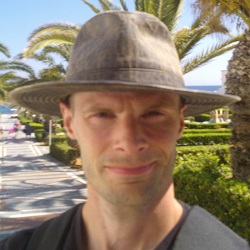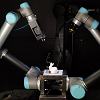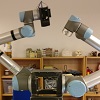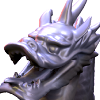Acquisition of surface BRDFs
for quality control and realistic rendering
We sample bidirectional reflection distribution functions (BRDFs) of materials and construct scenes with objects made of those materials
Accurate models of real-world 3D scenes complete with geometry, surface textures, and surface radiance models, finds application within multiple fields such as design, additive manufacturing, and virtual reality, amongst others. As an example, having an accurate 3D model of a real-world scene such as the internal structure of a wind turbine nacelle can be used to offer customers, managers, and trainees the opportunity to walk freely around inside this complicated structure and learn about its design without getting their hands dirty, by using virtual reality. This project is about creating a dataset of scene geometry and surface reflectance models which will create opportunities for doing research into realistic models of 3D scenes and their applications.
The radiometric behaviour of an object plays a crucial role in MVS. Often this behaviour has been ignored or at most assumed Lambertian. This allows for acceptable reconstructions of geometry, but often poor recovery of the reflectance. For more accurate MVS and reflectance capture, the BRDF of an object should be taken into account and this is a problem that receives a growing amount of attention.
Within the field of photometric stereo, the reflectance of an object is the key element in recovering surface normals and thereby indirectly the object's geometry. Also here, assumptions about reflectance are made, these include e.g. Lambertian behaviour or isotropic BRDFs.
For both of the above areas, a multi-view data set having ground-truth reflectance behaviour is of great value. We are therefore currently working on a MVS dataset where not only the ground-truth geometry is given, but also a densely sampled BRDF ground-truth for all materials in the scene.
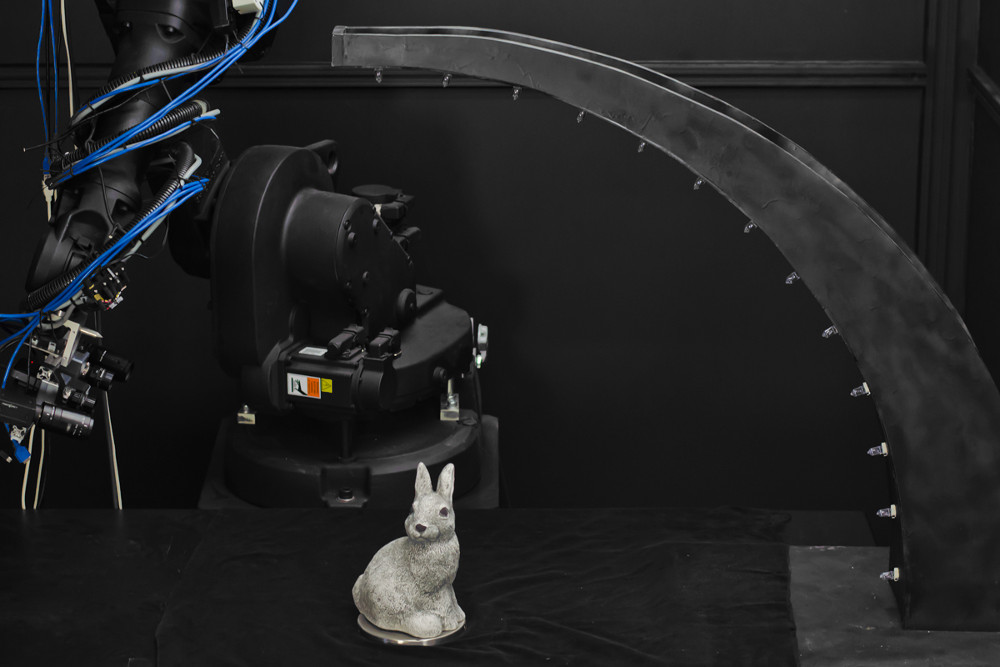
About the project
We are densely sampling the BRDFs of a collection of objects whose surfaces consist of one or a few, isotropic, BRDFs. The BRDFs of each material will be stored in the 3-dimensional Rusinkiewicz frame for isotropic BRDFs, as also done in the MERL database, although with a coarser resolution of 7.5 degrees in each dimension. In conjunction with the densely sampled BRDFs, stereo images of scenes containing the sampled objects are acquired for a wide range of directions. Objects are of relatively low geometric complexity, and scenes consists of one or more of the objects.
Contact
Jeppe Revall Frisvad
[Associate Professor]
Technical University of Denmark
Publications
Instrumentation for Estimating Surface Radiometry [2021]
M. E. B. DoestDepartment of Applied Mathematics and Computer Science, Technical University of Denmark
Using a robotic arm for measuring BRDFs [2019]
R. A. Lyngby, J. B. Matthiassen, J. R. Frisvad, A. B. Dahl, H. AanæsImage Analysis (Proceedings of SCIA 2019) , Lecture Notes in Computer Science, vol. 11482, 184-196
A variational study on BRDF reconstruction in a structured light scanner [2017]
J. B. Nielsen, J. D. Stets, R. A. Lyngby, H. Aanæs, A. B. Dahl, J. R. FrisvadProceedings of International Conference on Computer Vision Workshop (ICCVW 2017) , IEEE, 143-152
Scene reassembly after multimodal digitization and pipeline evaluation using photorealistic rendering [2017]
J. D. Stets, A. Dal_Corso, J. B. Nielsen, R. A. Lyngby, S. H. N. Jensen, J. Wilm, M. B. Doest, C. Gundlach, E. R. Eiriksson, K. Conradsen, A. B. Dahl, J. A. Bærentzen, J. R. Frisvad, H. AanæsApplied Optics , 56(27), 7679-7690
Robot Based BRDF Measurement System [2017]
M. E. B. DoestDepartment of Applied Mathematics and Computer Science, Technical University of Denmark
On Practical Sampling of Bidirectional Reflectance [2016]
J. B. NielsenDepartment of Applied Mathematics and Computer Science, Technical University of Denmark
On optimal, minimal BRDF sampling for reflectance acquisition [2015]
J. B. Nielsen, H. W. Jensen, R. RamamoorthiACM Transactions on Graphics (TOG) , 34(6), 186:1-186:11
Our 3D vision data-sets in the making [2015]
H. Aanæs, K. Conradsen, A. Dal_Corso, A. B. Dahl, A. D. Bue, M. E. B. Doest, J. R. Frisvad, S. H. N. Jensen, J. B. Nielsen, J. D. Stets, G. VogiatzisConference on Computer Vision and Pattern Recognition 2015 , Institute of Electrical and Electronics Engineers
Accuracy in robot generated image data sets [2015]
H. Aanæs, A. B. DahlImage Analysis (Proceedings of SCIA 2015) , Springer, Lecture Notes in Computer Science, vol. 9127, 472-479
Quality assurance based on descriptive and parsimonious appearance models [2015]
J. B. Nielsen, E. R. Eiriksson, R. L. Kristensen, J. Wilm, J. R. Frisvad, K. Conradsen, H. AanæsWorkshop on Material Appearance Modeling , The Eurographics Association, 21-24
